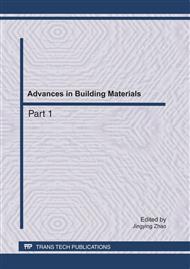p.868
p.873
p.878
p.883
p.888
p.895
p.900
p.905
p.909
A New Conception of Free Torsion Rigidity in Constraint Torsion Theory for Members with Open Thin-Walled Cross-Section
Abstract:
In calculating the internal force and deformation of a thin-walled member, the influence of the free torsion rigidity must be considered and it makes the study complicated. Actually, from the analogy relations between the equilibrium equation in the constraint torsion theory of a thin-walled member and that in the plane bending theory of a tension-bending solid bar, the action of the free torsion rigidity can be regarded as a tension effect on a thin-walled member with torsion, i.e. the action can be described as a second-order effect like the tension action in the plane bending theory. Taking cantilever bars for example, the simple calculation method of the internal force and deformation of thin-walled members are deduced by the Taylor series in mathematics, and then verified by ANSYS.
Info:
Periodical:
Pages:
888-894
Citation:
Online since:
May 2011
Authors:
Price:
Сopyright:
© 2011 Trans Tech Publications Ltd. All Rights Reserved
Share:
Citation:


